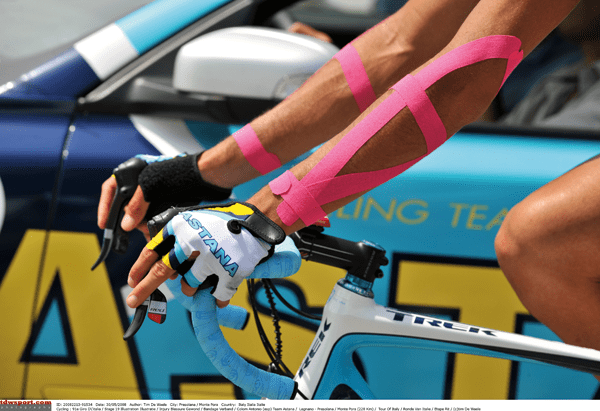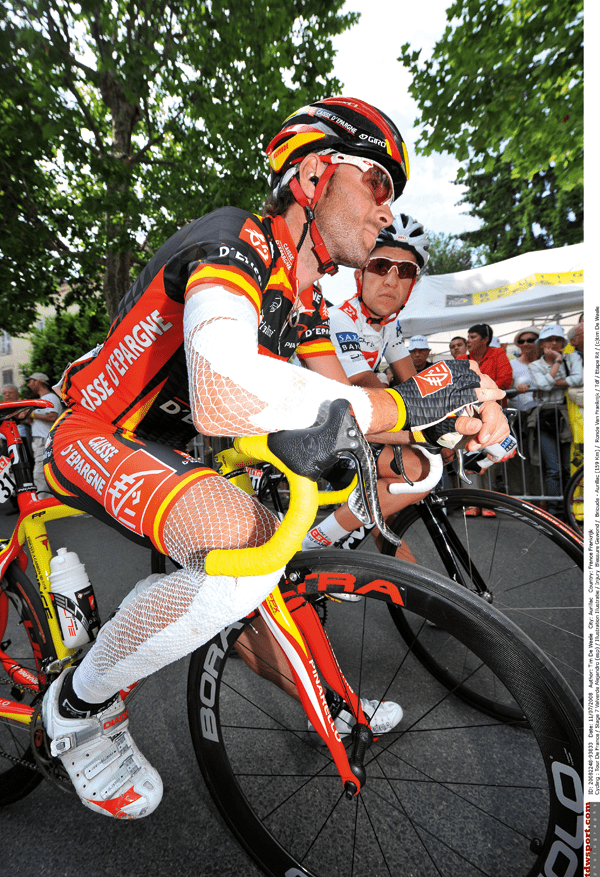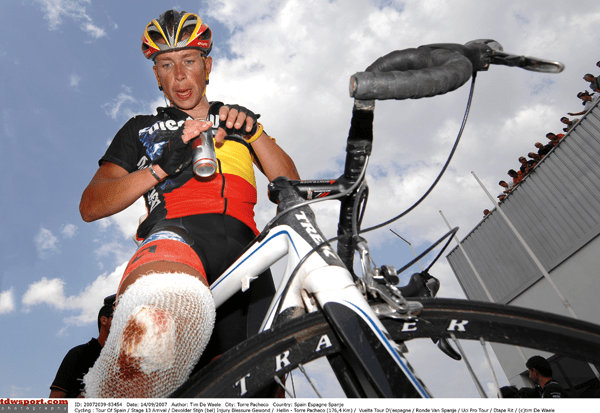 Injury. It is one of those things that no one wants or wants to talk about. Here’s how to minimise your chances of time off the bike.
Injury. It is one of those things that no one wants or wants to talk about. Here’s how to minimise your chances of time off the bike.
Most of us, myself included, generally hope that if we ignore any oncoming niggle or twinge long enough that it will just go away on its own and then we won’t have to deal with it. But as any of you who have been struck down by the scourge of an injury know, this is usually far from the case. More often than not, ignoring pain will result in time away from the bike and no one wants to spend time on the sideline watching everyone else. Through this article we will take a look at the do’s and don’ts to avoid finding yourself injured and on the sideline. The majority of injuries can be prevented or, at the very least, the severity decreased with good management and by following some of the handy hints mentioned below.
Looking at Pain
Before we have a more in depth look at injury prevention I first wanted to talk about pain. For most of us, pain is that four letter word that we do not like to acknowledge. But what is pain? Without going into complex and confusing detail, pain is simply your body warning you something isn’t right. Think of pain like the check engine or fuel light in your car. Those lights let you know that something isn’t right and that it needs to be attended to soon before something more serious happens—like your car blowing up and stoping dead on the side of the road with smoke billowing out from under its bonnet. Pain is your body’s warning light that something in a particular area is not quite right and should be looked at soon before you are found on the side of the road, holding on to your bike with smoke billowing out of your ears in frustration. Pain is your body talking to you and trying to tell you something. I would recommend you listen to it before your body goes from talking to you, to screaming all of the expletives under the sun at you.

The Do Nots
Let’s start with the do-nots when it comes to injury prevention. These are the things that if done often enough, will see you spending large amounts of time away from your dearly beloved (your bike I’m talking about, not your partner).
- Do Not Ignore It. Ignoring a niggle or any other type of pain can potentially lead to a more serious injury that will see you spending more time at the doctors than on your bike. Pain is a warning sign that something isn’t right and it should be taken seriously.
- Do Not Continue to Train Through It. This is often the attitude of the misinformed or the hard-core who can never miss a training session. The difference between ignoring pain and continuing to train through it is that whatever damage you already have could now be made worse. Mixing these first two points together will see what was a small problem become a very large one quite quickly. This could result in you having to go under the knife to try and repair the mess you have created by thinking that you are fine and continuing to train.
- Do Not Self-Assess. To all those would be doctors or physios, or just anyone that has watched a few too many medical television shows, self-assessment is potentially dangerous. I have heard terrible stories of people who after a crash have had a bit of a stiff neck and self-assessed it as nothing to worry about. Three weeks later they still had some pain so they went and got it checked out, only to find they had a fractured vertebra. If they had moved the wrong way they could have found themselves in a wheel chair for the rest of their lives. Admitidly that was a bit of an extreme case, but my story does highlight the issue of how potentially dangerous self-assessment can be. Another problem is people who self-assess that everything is better and they are okay to return to the bike. You will feel okay well before any problem that you may be encountering has fully healed, however you should follow the advice of your medical practitioner before getting back on the bike.
- Do Not Overtrain. Unless you have had a crash then the development of a niggle generally points to one area—your training program. Odds are that your body has not adapted or cannot handle the training load you are giving it. As well as seeking treatment for your niggle, speak with your coach about your program and make the necessary changes required. If the changes aren’t made you could potentially be looking at an injury that will continue to reoccur or a long-term chronic injury that won’t just sideline you for a week or two, it could be for a season or longer.

The Do’s
After all that negative talk let us take a look at what you can do if you want to keep healthy and injury free, or at the very least, minimise your risk of getting an injury or a massive doctor’s bill from having to go under the knife.
- DO Listen to Your Body. It seems like a simple concept but in reality we want to train and our body making a small complaint is something we can easily push aside. I have been guilty of not listening to my body when I have had a niggle or when I was feeling too tired to go out and I paid the price. Missing one training session won’t kill you.
- Do Make Program Adjustments. Whether you are professionally or self-coached, some sort of adjustments to your program will be needed to either lighten your training load, volume or intensity. If concessions are not made when the early signs of injury appear then things can quickly snowball into recurring or chronic injuries.
- Do Recover Properly. In Bicycling Australia May/June 2012 I wrote an article on the importance of rest and recovery. In the article I also outlined a number of steps that could be taken to help with the recovery process such as massage, ice baths and a number of stretches that can be conducted after the completion of a training session. Hunt it down for a good read.
- Do Strength Training. When most people hear the words ‘strength training’ they think of the body builder at their local gym pumping weights, drinking their magic protein shakes and getting massive. Nothing could be further from the truth. Yes pumping some iron at the gym is one way to strength your muscles to be able to better handle the demands of cycling, but so is Pilates and Yoga. There is nearly an endless list of ways you can strengthen your muscles. Have a chat with a personal trainer or do a Google search and find something that you enjoy and that can be adapted to target your requirements of specifically strengthening your body for cycling.
Injuries happen for any large number of reasons from your training load as discussed above, to your bike fit, how you bend down and fasten up your cycling shoes, or even a crash. Unfortunately, in some situations no matter even if you follow all the Do’s listed above and stay well clear of all the Do Nots you may still find yourself with some sort of niggle either from bad luck or bad management. How bad it becomes and how long you spend warming the timber of the bench is entirely up to you. Follow the DO’s and with a little luck you will be enjoying plenty of the sunshine whilst out enjoying the company of your beloved steed.

